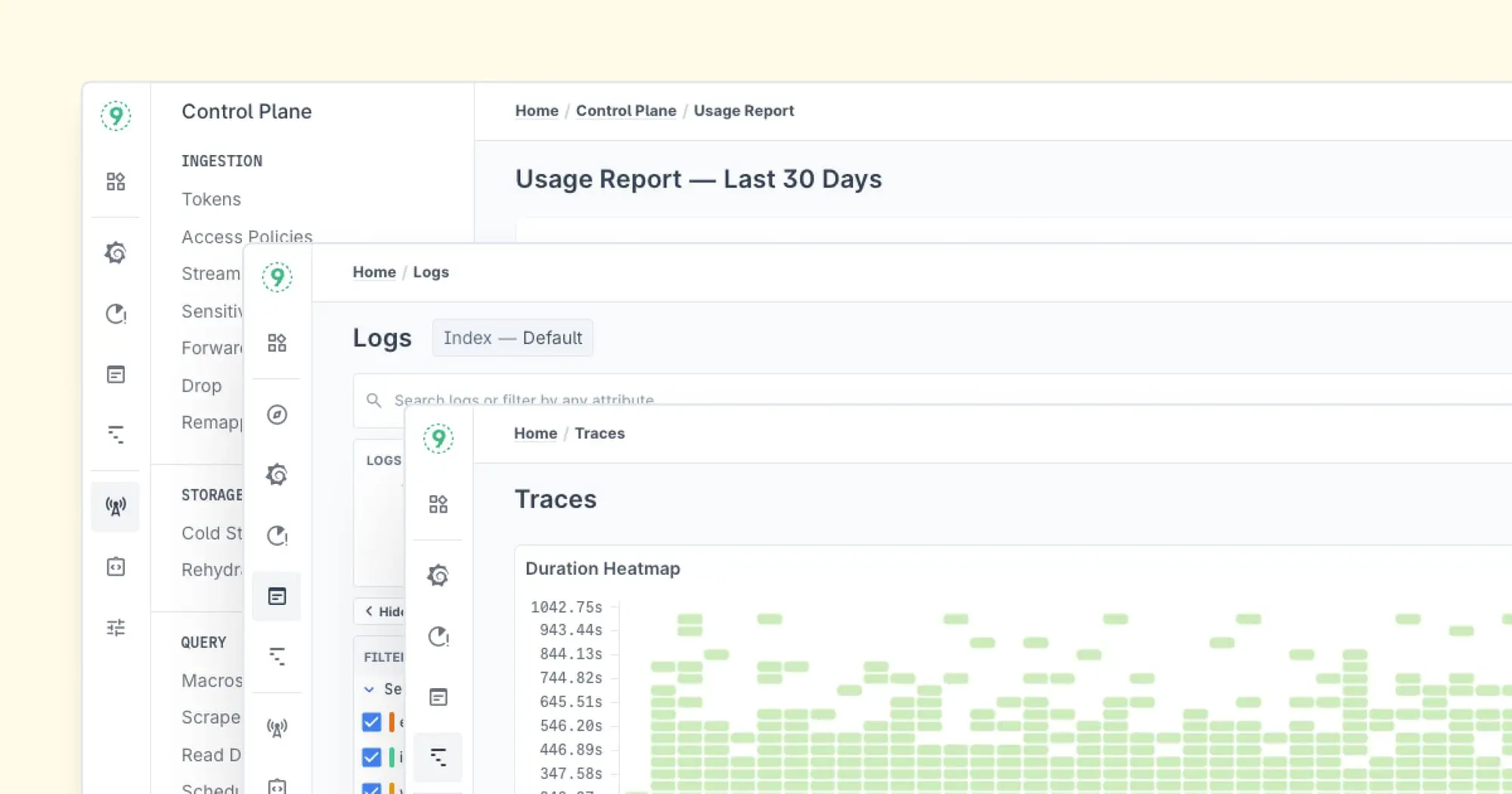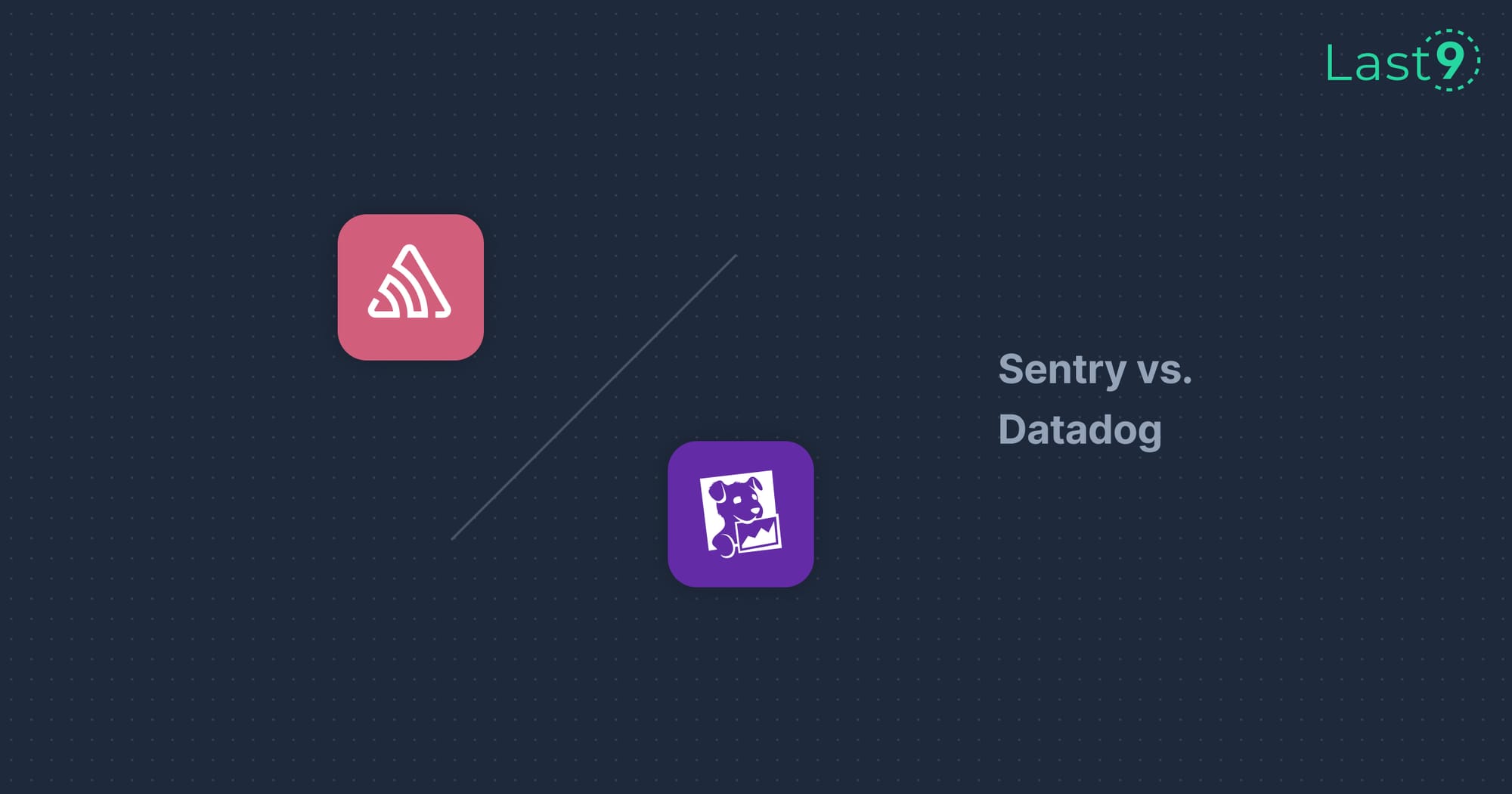Monitoring and observability are cornerstones of modern infrastructure management. Three popular solutions that often come up in this space are the ELK Stack, Grafana, and Prometheus.
This comparison breaks down the key differences, use cases, and integration capabilities to help you determine which tool or combination better suits your operational needs.
Core Functionality and Purpose
The ELK Stack: Unified Log Analysis Platform
The ELK Stack is a collection of three open-source projects: Elasticsearch, Logstash, and Kibana. Together, they form a robust log management and analytics platform. Let's break down each component:
Elasticsearch: Acts as the search and analytics engine at the core of the stack. It's a distributed, RESTful search engine built on Apache Lucene that excels at full-text search with an inverted index structure. Elasticsearch stores data in JSON documents and provides near real-time search capabilities across billions of records.
Logstash: Serves as the data processing pipeline that ingests data from multiple sources simultaneously. It can parse and transform data before sending it to Elasticsearch. Logstash features over 200 plugins for various input sources, filters for transformation, and output destinations.
Kibana: Functions as the visualization layer, providing a user interface for searching, viewing, and interacting with data stored in Elasticsearch indices. Kibana offers various visualization types from simple line charts to complex geospatial maps.
ELK has since evolved into the Elastic Stack, incorporating Beats – lightweight data shippers that expand collection capabilities beyond logs to include metrics, network data, and more. Beats are single-purpose data shippers that send data from hundreds or thousands of machines to Logstash or Elasticsearch.
Grafana: Visualization-First Observability Platform
Grafana is an open-source analytics and monitoring platform specifically designed to visualize time-series data. Unlike the ELK Stack, Grafana doesn't include built-in data storage but instead connects to various data sources through a plugin-based architecture.
At its core, Grafana provides a powerful query editor interface that adapts to each data source's unique query language. This allows users to extract precise metrics without learning multiple query syntaxes. The platform excels at creating interactive dashboards with real-time data visualization, supporting refresh intervals as low as 1 second.
Grafana connects to numerous data sources, including Prometheus, InfluxDB, Elasticsearch, MySQL, PostgreSQL, and many others—over 100 in total through its plugin ecosystem. While Grafana's primary strength is metrics visualization, it can also handle logs and traces when paired with appropriate data sources like Loki (for logs) and Tempo (for distributed tracing), creating a complete observability solution.
Prometheus: Purpose-Built Metrics Collection System
Prometheus is an open-source systems monitoring and alerting toolkit that was originally developed at SoundCloud before joining the Cloud Native Computing Foundation (CNCF) as its second hosted project, after Kubernetes. Unlike the ELK Stack or Grafana, Prometheus is specifically designed as a metrics-first monitoring system.
At its core, Prometheus follows a pull-based architecture where it scrapes metrics from instrumented applications and services at regular intervals. It stores all metrics as time series data, with each time series identified by a metric name and key-value pairs called labels. This dimensional data model enables powerful querying capabilities through PromQL (Prometheus Query Language).
Prometheus includes its own time-series database optimized for metrics storage, a multi-dimensional data model, a powerful query language, and an integrated alerting system. While it does include a basic web UI for querying and visualization, it's often paired with Grafana for more advanced dashboarding capabilities.
How Each Platform Handles Data
ELK Stack Architecture: End-to-End Data Pipeline
The ELK Stack implements a complete three-tier architecture that handles the entire data lifecycle:
- Data Collection Layer (Logstash/Beats):
- Logstash provides robust data ingestion with input plugins for various sources
- Beats offers lightweight, purpose-built data shippers
- Data transformation occurs at this stage through Logstash filters
- Buffer management handles traffic spikes with persistent queues
- Data Storage Layer (Elasticsearch):
- Distributed document store based on Lucene
- Implements sharding for horizontal scaling across nodes
- Replication for high availability and fault tolerance
- Uses inverted indices for fast full-text search
- Manages data lifecycle with Index Lifecycle Management
- Data Visualization Layer (Kibana):
- Web interface for Elasticsearch
- Query builder with Kibana Query Language (KQL)
- Dashboard creation and management
- Advanced visualizations and canvas workpads
Grafana Architecture: Visualization-Focused Design
Grafana employs a modular architecture that focuses on visualization excellence:
- Data Source Layer:
- Plugin-based connector system for 100+ data sources
- Query editor interfaces tailored to each data source
- Mixed data source panels possible within single dashboards
- Data source proxy for handling authentication
- Visualization and Dashboard Layer:
- Panel-based visualization system with extensive customization
- Template variables for creating dynamic, interactive dashboards
- Time range controls with absolute and relative options
- Annotation system for event correlation
- Alert and Notification Layer:
- Unified alerting system across data sources
- Alert rule evaluation engine
- Multiple notification channels
- Silencing and grouping capabilities
Prometheus Architecture: Pull-Based Metrics Collection
Prometheus features a streamlined architecture focused on metrics collection:
- Data Collection Layer:
- Pull-based metrics scraping over HTTP
- Service discovery for dynamic target identification
- Push Gateway for batch jobs and ephemeral processes
- Client libraries for easy application instrumentation
- Data Storage Layer:
- Custom time-series database optimized for metrics
- Local storage by default with long-term storage adapters
- Label-based data model with high-cardinality support
- Recording rules for pre-computed expressions
- Query and Alerting Layer:
- PromQL query language for metric analysis
- Alerting rules with flexible expressions
- Alert Manager for notification routing and deduplication
- Basic built-in visualization interface
Data Collection Approaches: Push vs. Pull Models
ELK Stack: Push-Based Collection
The ELK Stack implements a primarily push-based collection model:
- Logstash: Server-side collection agent that receives data via various inputs
- Beats: Lightweight agents that push data to Logstash or Elasticsearch
- Data Types: Handles logs, metrics, traces, and any structured/unstructured data
- Configuration: Agent-side configuration defining what and how to collect
- Transport: HTTP, TCP, or UDP depending on the agent
- Buffering: Local queuing for reliability during network issues
Grafana: No Native Collection
Grafana itself doesn't include data collection components:
- External Collectors: Relies on other tools for data collection
- Grafana Agent: Optional agent for Grafana Cloud
- Loki Promtail: Push-based log collection for Loki
- Integration Approach: Connection to existing data stores
Prometheus: Pull-Based Collection
Prometheus implements a pull-based collection model:
- Scraping: Periodically polls HTTP endpoints for metrics
- Service Discovery: Dynamically discovers targets to monitor
- Data Types: Focused exclusively on time-series metrics
- Configuration: Server-side configuration defining what to scrape
- Exporters: Adapters for systems without native Prometheus metrics
- Push Gateway: Optional component for push-based use cases
Data Visualization Capabilities
ELK Visualization Features: Content-Aware Visual Analysis
Kibana, the visualization component of ELK, offers a rich set of visualization options:
- Discover Interface: Dedicated search interface with field statistics
- Dashboard Building Blocks:
- Line, area, and bar charts with multiple Y-axes
- Pie charts and donut charts for distribution
- Gauge and goal visualizations for KPIs
- Data tables with conditional formatting
- Advanced Visualization Types:
- Canvas workpad for custom presentations
- Time-series analysis with Timelion expressions
- Coordinate maps for geospatial data
- TSVB for complex time series visualizations
Grafana Visualization Features: Time-Series Optimized Display
Grafana provides visualization capabilities with a strong focus on metrics:
- Core Visualization Types:
- Time-series panels with extensive styling options
- Stat panels for single-value displays with thresholds
- Bar charts, heatmaps, and histograms
- Tables with multi-column sorting and value mapping
- Interactive Features:
- Template variables for creating dynamic dashboards
- Data links for cross-dashboard navigation
- Threshold-based color changes
- Annotations for event correlation
- Advanced Capabilities:
- Alerts integrated directly with visualizations
- Panel transformations for data manipulation
- Overrides for fine-grained control of specific fields
- Multi-valued variables for complex filtering

Prometheus Visualization Features: Basic Metric Graphing
Prometheus includes a basic web UI for visualization:
- Expression Browser:
- Simple time-series graphs
- PromQL query execution
- Table view for results
- Basic configuration options
- Limitations:
- No dashboard functionality
- Limited styling options
- No template variables
- No interactive features
- Note: Most organizations use Grafana for Prometheus visualization
How to Extract Insights from Data
Elasticsearch Query DSL and Kibana Query Language (KQL)
Elasticsearch provides a JSON-based query DSL (Domain Specific Language):
- Query types:
- Term-level queries (exact matches)
- Full-text queries (analyzed text matching)
- Compound queries (boolean combinations)
- Geo and specialized queries
- Kibana Query Language (KQL):
- Simplified syntax for Elasticsearch queries
- Field-based filtering with auto-completion
- Boolean operators and range queries
- Strengths:
- Extremely powerful for text analysis
- Complex nested queries possible
- Rich aggregation framework
Grafana Query Interface
Grafana provides tailored interfaces for each data source:
- Data source-specific editors:
- SQL editor for relational databases
- PromQL editor for Prometheus
- Elasticsearch query interface
- LogQL editor for Loki
- Transformation capabilities:
- Join, reduce, and filter operations
- Calculate new fields
- Group by field values
- Strengths:
- Unified interface across data sources
- Visual query builders for some sources
- Variable substitution
PromQL (Prometheus Query Language)
Prometheus provides PromQL, a functional query language for time-series:
- Syntax features:
- Instant and range vector selectors
- Functions and operators
- Rate calculations
- Aggregation operations
- Common operations:
- Rate of change calculation
- Moving averages
- Percentile calculations
- Label filtering and grouping
- Strengths:
- Purpose-built for time-series analysis
- Efficient for high-cardinality data
- Strong mathematical operations
Alerting Capabilities
ELK Stack Alerting Framework
The Elastic Stack includes an integrated alerting framework:
- Watcher: The primary alerting mechanism
- Elastic Alerting: A newer, more user-friendly alerting UI
- Machine Learning Integration: Anomaly detection-based alerting
- Alert types: Threshold-based, anomaly-based, availability checks
Grafana Alerting System
Grafana includes a unified alerting system:
- Unified Alerting: Centralized alert rule management
- Alert rule options: Multi-condition alerting, reducer functions
- Notification capabilities: Contact points, notification policies
- Integration with AlertManager: External alert manager support
Prometheus Alerting Architecture
Prometheus provides a two-component alerting system:
- Alerting Rules: PromQL-based rule definitions
- AlertManager: Grouping, inhibition, silencing capabilities
- Alert routing: Time-based, service-based, escalation paths
- Alert workflow: Pending, firing, resolved states
Scalability and Performance
ELK Stack Scalability Approach
The ELK Stack handles scalability through a distributed architecture:
- Elasticsearch Scaling: Horizontal scaling with node types
- Logstash Scaling: Multiple instances with load balancing
- Performance Considerations: Memory-intensive, disk I/O dependent
- Typical Limits: Petabytes of data with sufficient hardware
Grafana Scalability Approach
Grafana's scalability focuses on visualization and query optimization:
- Server Scaling: Multiple server instances behind load balancer
- Query Performance: Query caching, dashboard caching
- Performance Considerations: Database size, network bottlenecks
- Typical Limits: Thousands of dashboards, hundreds of users
Prometheus Scalability Approach
Prometheus employs a federated approach to scalability:
- Storage Scaling: Local storage with federation options
- Collection Scaling: Multiple Prometheus servers for different targets
- Performance Considerations: Cardinality limits, scrape interval impact
- Typical Limits: 1-2 million series per instance, federation for more
Deployment Models: Installation and Operations
ELK Stack Deployment Options
- Self-Managed: Bare metal, VMs, Docker, Kubernetes
- Elastic Cloud: Fully managed SaaS offering
- Operational Considerations: JVM tuning, high memory consumption
- High Availability: Multi-node clusters, cross-zone distribution
Grafana Deployment Options
- Self-Managed: Binaries, packages, Docker, Kubernetes
- Grafana Cloud: Fully managed SaaS offering
- Operational Considerations: Database backend, plugin management
- High Availability: Multiple servers with load balancing
Prometheus Deployment Options
- Self-Managed: Binaries, packages, Docker, Kubernetes
- Managed Services: Third-party offerings, cloud integrations
- Operational Considerations: Storage management, retention configuration
- High Availability: Redundant instances, Thanos/Cortex for storage
How Teams Use These Tools Together
ELK-Only Monitoring Stack
- Implementation: Unified platform for all observability signals
- Benefits: Single vendor, consistent management
- Challenges: Resource-intensive, specialized knowledge required
- Ideal For: Organizations prioritizing vendor consistency
Prometheus + Grafana Stack
- Implementation: Prometheus for metrics, Grafana for visualization
- Benefits: Cloud-native friendly, lower resource requirements
- Challenges: Limited to metrics unless extended
- Ideal For: Kubernetes environments, microservice architectures
Three-Pillar Observability Stack (ELK + Prometheus + Grafana)
- Implementation: ELK for logs, Prometheus for metrics, Grafana for unified visualization
- Benefits: Best-of-breed approach, complete coverage
- Challenges: Complex integration, multiple systems to maintain
- Ideal For: Large engineering organizations, mission-critical applications
The Grafana LGTM Stack
- Implementation: Loki (logs), Grafana, Tempo (traces), Mimir (metrics)
- Benefits: Consistent interfaces, lower resource requirements
- Challenges: Less mature than ELK for logs
- Ideal For: Cloud-native organizations seeking operational simplicity
Platform Comparison and Decision Guide
The decision between ELK, Grafana, and Prometheus depends on your specific monitoring requirements, existing infrastructure, and team expertise:
| Factor | ELK Stack | Grafana | Prometheus |
|---|---|---|---|
| Primary strength | Log management | Visualization | Metrics collection |
| Main data type | Logs, any JSON | Depends on source | Time-series metrics |
| Collection method | Push (Beats/Logstash) | No native collection | Pull (HTTP scraping) |
| Storage included | Yes (Elasticsearch) | No | Yes (limited) |
| Visualization | Good (Kibana) | Excellent | Basic |
| Query language | KQL/Elasticsearch DSL | Depends on source | PromQL |
| Learning curve | Steep | Moderate | Moderate |
| Resource usage | High | Low | Medium |
| Cloud-native fit | Good | Excellent | Excellent |
| Kubernetes integration | Good | Excellent | Excellent |
| Best for | Log-centric workflows | Universal dashboards | Metrics-centric workflows |
| License | Elastic License 2.0 | AGPLv3 | Apache 2.0 |
When to Use Each Tool
- Choose ELK When:
- Log analysis is your primary concern
- You need a powerful full-text search
- You want a unified platform for all observability data
- You have resources for a more complex deployment
- Choose Grafana When:
- You need unified visualization across multiple data sources
- You want the best dashboarding experience
- You already have data collection and storage solutions
- You prefer a visualization-first approach
- Choose Prometheus When:
- Metrics are your primary concern
- You're running a Kubernetes environment
- You prefer a pull-based collection model
- You need a lightweight, focused solution
- Choose a Combined Approach When:
- You need comprehensive observability across logs, metrics, and traces
- You have diverse technology stacks
- You want specialized tools for each data type
- You have the resources to manage multiple systems
Conclusion
Each of these platforms has distinct strengths that align with different monitoring and observability needs.
But if you're after a managed solution that’s easier on the budget—without cutting corners on performance—Last9 is worth a look.
Instead of charging by the byte or query, we keep things simple with pricing based on the number of events ingested. That means more predictable bills and fewer surprises.
Last9 powers high-cardinality observability at scale for companies like Disney+ Hotstar, CleverTap, and Replit. As a telemetry data platform, we’ve helped monitor 11 of the 20 biggest live-streaming events ever.
We plug right into OpenTelemetry and Prometheus, bringing metrics, logs, and traces under one roof—so you get fast, cost-efficient, and correlated insights, all in real-time.
Talk to us or get started for free today!



